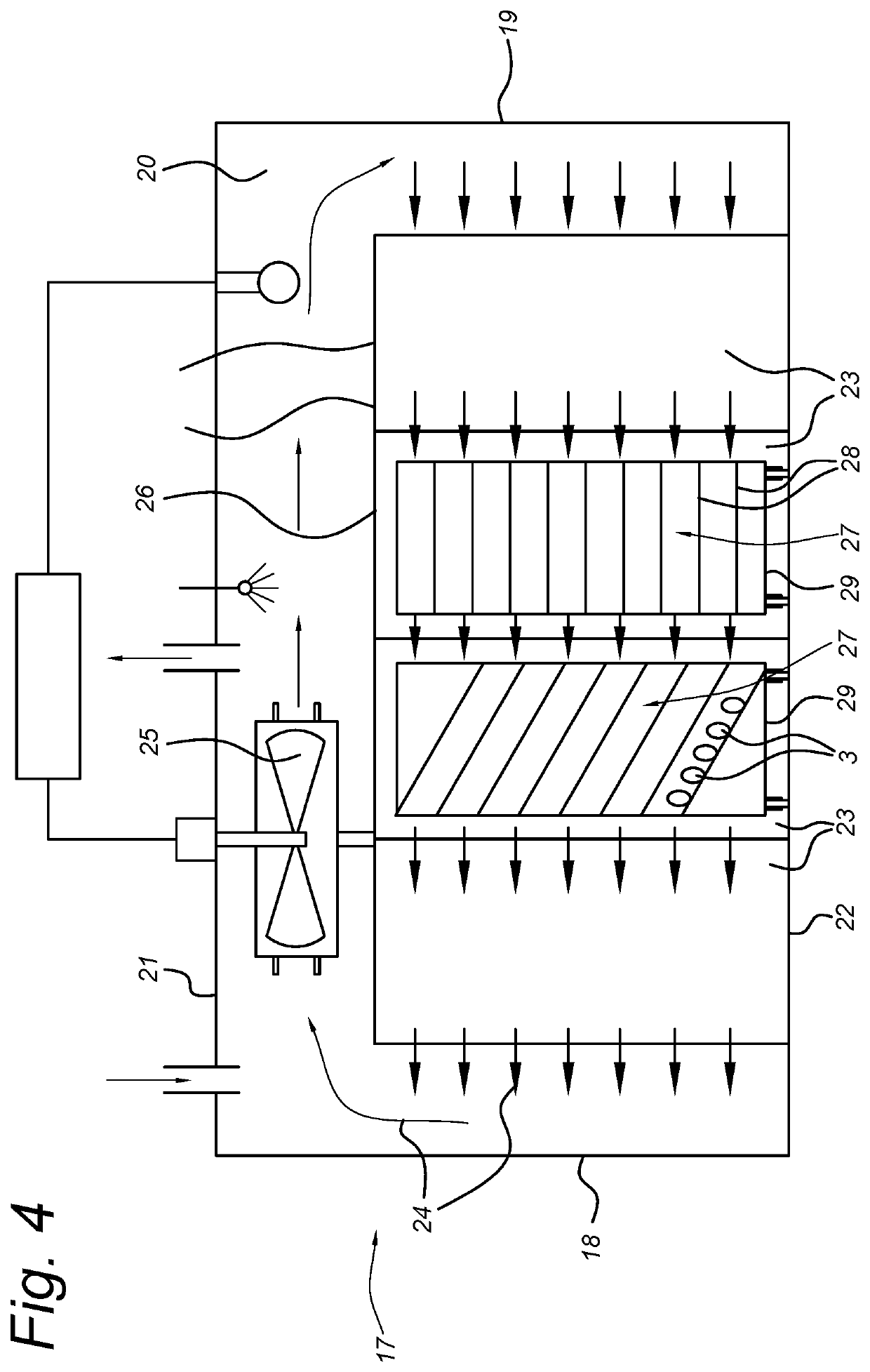Method for hatching eggs
a technology for hatching eggs and chicks, applied in the field of hatching eggs, can solve the problems of inefficient use of incubator capacity, and achieve the effect of improving the utilization of hatchery
- Summary
- Abstract
- Description
- Claims
- Application Information
AI Technical Summary
Benefits of technology
Problems solved by technology
Method used
Image
Examples
Embodiment Construction
[0052]FIG. 1 is a process flow 1 of a method for producing chicks in a hatchery according to the prior art. The input of the process is a batch 2 of eggs 3. The eggs 3 are hatching eggs starting incubation. In process step 7 the batch 2 of eggs is incubated for a period of normally 18 days. In step 4 for each egg 3 of the batch, the presence of a hatchable chick embryo is detected. These hatcheable eggs 3 are then hatched during step 8 in a hatching device until hatching occurs. During this step, trays and therefore the hatching device, are not optimally filled because the trays contain empty places and male embryo's / chicks. After hatching, the 1 day old male chicks are killed.
[0053]FIG. 2 is a process flow 9 of a method for producing chicks in a hatchery according to the invention The input of the process is a batch 2 of eggs 3. The eggs 3 are hatching eggs starting incubation. In process step 7a the batch 2 of eggs is incubated in incubating trays in an incubating device during a ...
PUM
 Login to View More
Login to View More Abstract
Description
Claims
Application Information
 Login to View More
Login to View More - R&D
- Intellectual Property
- Life Sciences
- Materials
- Tech Scout
- Unparalleled Data Quality
- Higher Quality Content
- 60% Fewer Hallucinations
Browse by: Latest US Patents, China's latest patents, Technical Efficacy Thesaurus, Application Domain, Technology Topic, Popular Technical Reports.
© 2025 PatSnap. All rights reserved.Legal|Privacy policy|Modern Slavery Act Transparency Statement|Sitemap|About US| Contact US: help@patsnap.com



